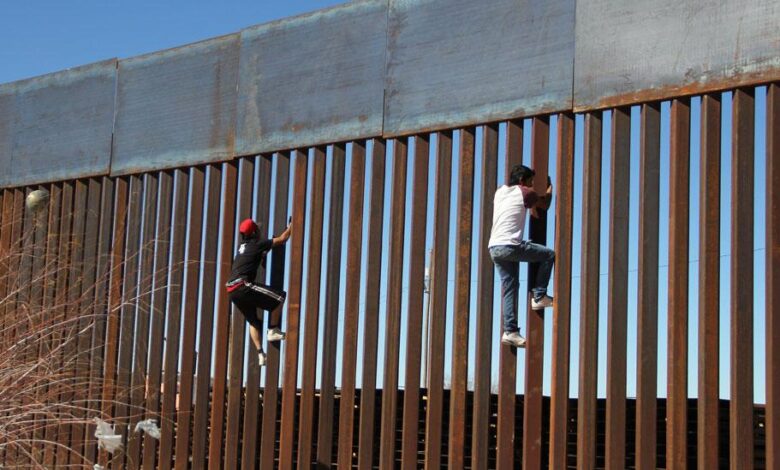Understanding the Impact of Border Walls on Illegal Immigration

The construction of border walls or barriers along the U.S.-Mexico border has been a topic of intense debate in recent years. Proponents argue that these physical barriers are necessary to prevent illegal immigration, while opponents claim that walls are not only ineffective but also harmful to both the environment and vulnerable migrant populations. This article explores the impact of border walls on illegal immigration and the broader implications for U.S. immigration policy.
1. The Rationale for Border Walls
The primary argument in favor of constructing border walls is to deter illegal immigration. By physically blocking access to the U.S., proponents believe that walls would reduce the number of people attempting to cross the border without authorization. Border walls are seen as a way to secure the southern border, prevent drug trafficking, and protect national security.
Supporters argue that walls would force migrants to go through legal entry points, where they would be subject to inspection, background checks, and other procedures. The idea is that a physical barrier would channel migration into controlled pathways, making it easier for authorities to manage and enforce immigration laws.
2. The Efficacy of Border Walls
While the idea of a border wall sounds appealing to those advocating for stronger immigration controls, the evidence on the effectiveness of border walls is mixed. Studies have shown that while physical barriers can prevent illegal crossings in some areas, they are not a foolproof solution.
Border walls are most effective in urban areas with high levels of traffic, where it is easier to monitor and control access. However, in more remote and rugged areas, such as deserts and mountains, walls can be less effective. Migrants often find ways to circumvent these barriers, either by climbing over them, digging tunnels underneath, or simply bypassing them altogether by crossing in areas where walls are absent.
Additionally, the construction of border walls has led to increased use of dangerous and less-patrolled areas. As migrants are forced to avoid heavily fortified entry points, they often resort to crossing harsh and perilous landscapes, leading to a higher risk of injury or death.
3. Environmental and Social Impacts
The construction of border walls has also raised significant concerns about its environmental impact. The U.S.-Mexico border stretches across diverse ecosystems, including deserts, wetlands, and wildlife habitats. The construction of walls disrupts these ecosystems, blocking animal migration routes, and harming local flora and fauna.
Socially, the impact of border walls is equally concerning. Walls create barriers between communities, particularly those that straddle the U.S.-Mexico border. Families and individuals who live on both sides of the border may find it more difficult to maintain relationships and access basic services. The physical and psychological effects of a wall can be divisive, creating a sense of separation between people who have historically lived in close proximity.
4. The Economic Costs of Border Walls
Constructing and maintaining border walls is an expensive endeavor. The estimated cost of building the proposed border wall between the U.S. and Mexico has been in the billions of dollars, with ongoing maintenance and security costs adding to the financial burden. Critics argue that this money could be better spent on more effective immigration solutions, such as improving border security technologies, expanding legal immigration pathways, and addressing the root causes of migration.
Furthermore, border walls can create economic hardship for local communities. Many regions along the border rely on cross-border trade and commerce. By obstructing access to international trade routes, border walls can disrupt local economies, particularly in areas where families and businesses rely on the movement of people and goods across the border.
5. Alternatives to Border Walls
Rather than relying on physical walls, many immigration experts advocate for a more comprehensive approach to border security. This approach includes the use of technology, such as drones, sensors, and surveillance systems, to monitor and secure the border. These tools allow authorities to detect and respond to illegal crossings in real-time, without the need for a physical barrier.
Additionally, creating legal pathways for immigration, addressing the root causes of migration, and improving asylum procedures would reduce the pressure on individuals to cross the border illegally in the first place. Comprehensive immigration reform, which includes both enforcement measures and humanitarian protections, could be a more effective and humane solution than relying solely on border walls.
6. Conclusion
The construction of border walls along the U.S.-Mexico border remains a contentious issue. While proponents argue that walls are necessary for national security, critics point out the environmental, social, and financial costs associated with their construction. The reality is that border walls are not a silver bullet for solving the complex issue of illegal immigration. A multifaceted approach that combines technology, legal immigration pathways, and comprehensive reform may be a more sustainable solution to managing migration in the 21st century.





